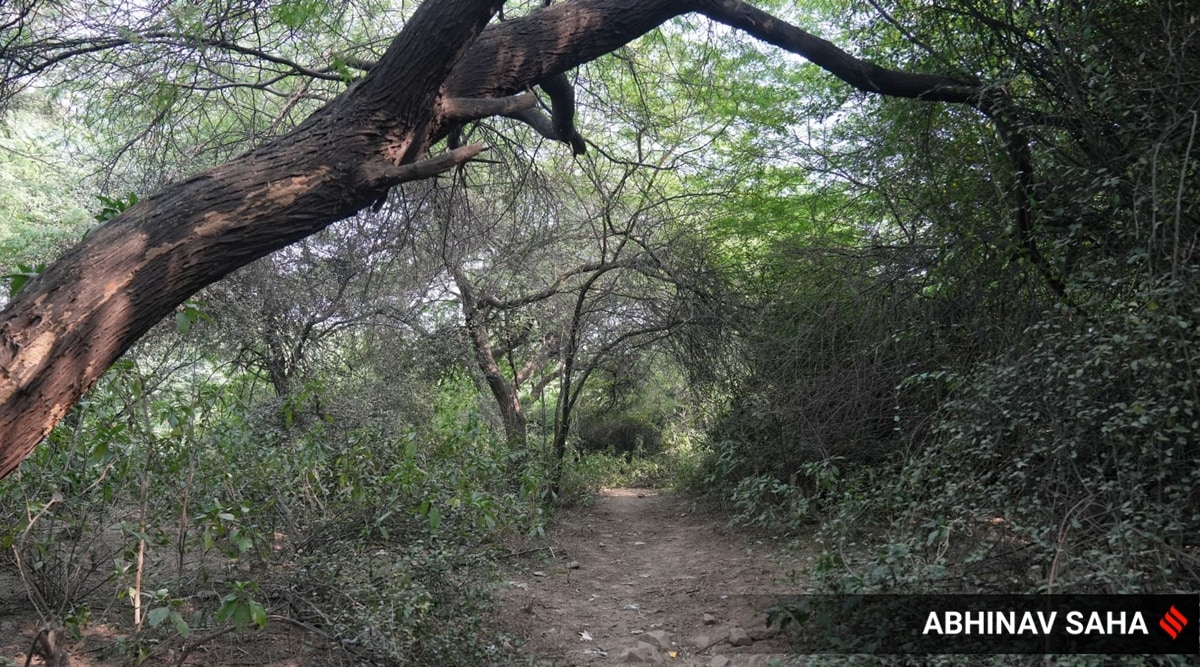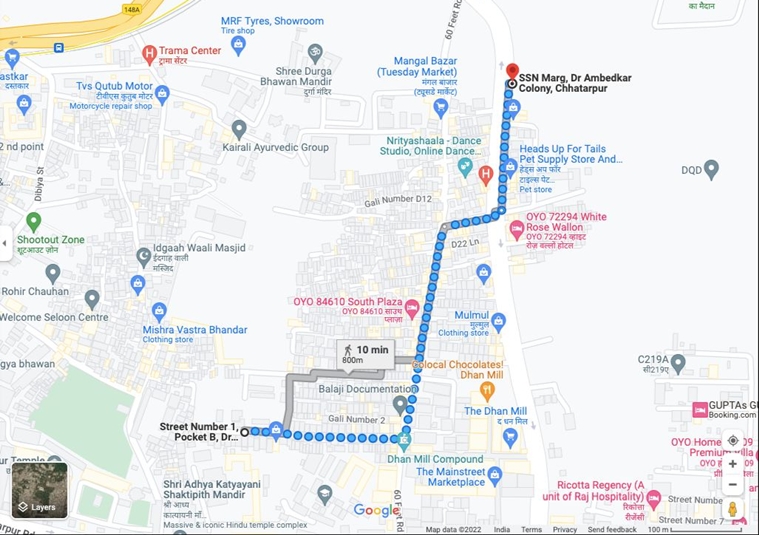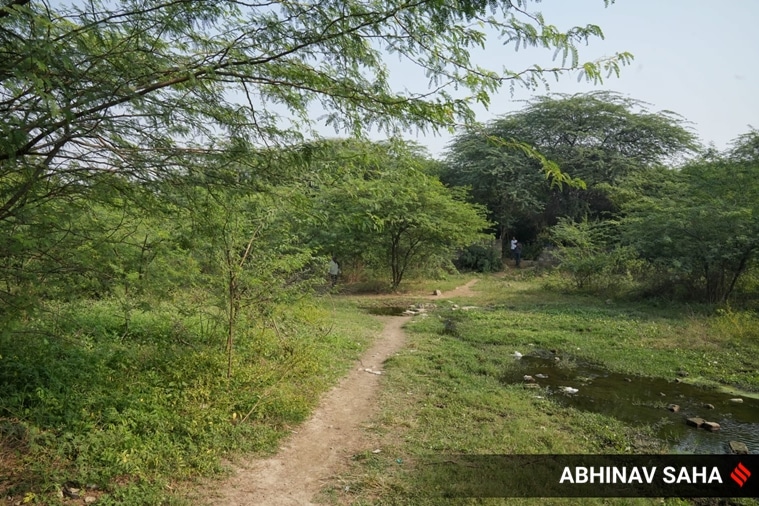 A few sparse trees and a small stream quickly give way to a jungle, where a series of rough, stony paths criss-cross the hilly terrain. (Express photo by Abhinav Saha)
A few sparse trees and a small stream quickly give way to a jungle, where a series of rough, stony paths criss-cross the hilly terrain. (Express photo by Abhinav Saha)In a lane in Mehrauli’s Chattarpur Pahadi area, there is an unremarkable green apartment building, like many others in the city. But it was this building that played host to the horrific murder of Shraddha Walker (27), allegedly by her live-in partner, Aaftab Poonawala (28), on May 18.
On Tuesday morning, police took Aaftab, his face obscured by a scarf, to the nearby Mehrauli jungle where he had disposed of her dismembered remains over a period of two-three months. While Tuesday’s search did not yield results, during previous searches police have recovered 13 possible body parts, mostly in the form of bones.
 A map of the path.
A map of the path. The street outside the apartment is sloped and narrow, characteristic of many of Mehrauli’s lanes, built on mountainous ground. The area is mostly residential, with the occasional shops. As Aaftab went out in the early hours of the morning to dispose of Shradhha’s remains in polythene bags, usually from 1 am to 2 am, few residents would have been awake to see him. Police have also noted that the area is home to many young tenants, who are out during odd hours, which is why Aaftab’s movements would not have evoked suspicion.
 A few sparse trees and a small stream quickly give way to a jungle, where a series of rough, stony paths criss-cross the hilly terrain. (Express photo by Abhinav Saha)
A few sparse trees and a small stream quickly give way to a jungle, where a series of rough, stony paths criss-cross the hilly terrain. (Express photo by Abhinav Saha) As he made his way out of the lane to the main road that leads straight to the forest, he would have made his way through a busy main road, passing houses, stores, mechanic garages, and a clinic. As he reached the T-point a few minutes’ walk away from the jungle, he would have crossed an unkempt section of road where garbage is gathered for disposal. The entire walk takes about 20 minutes on a busy afternoon. On a quiet night, he would likely have been able to do so faster.
Quick access to the Mehrauli forest in the immediate vicinity is blocked by walls in most places, except for one place where the wall is broken. There, a garbage strewn slope leads down to the forest. A few sparse trees and a small stream quickly give way to a jungle, where a series of rough, stony paths criss-cross the hilly terrain.
The foliage is often dense and thorny, and in many places, is dark even under the afternoon sun. Often, the forest is too thick to see anything more than ten feet away from the beaten path, even as the sound of traffic is still audible from the nearby road.